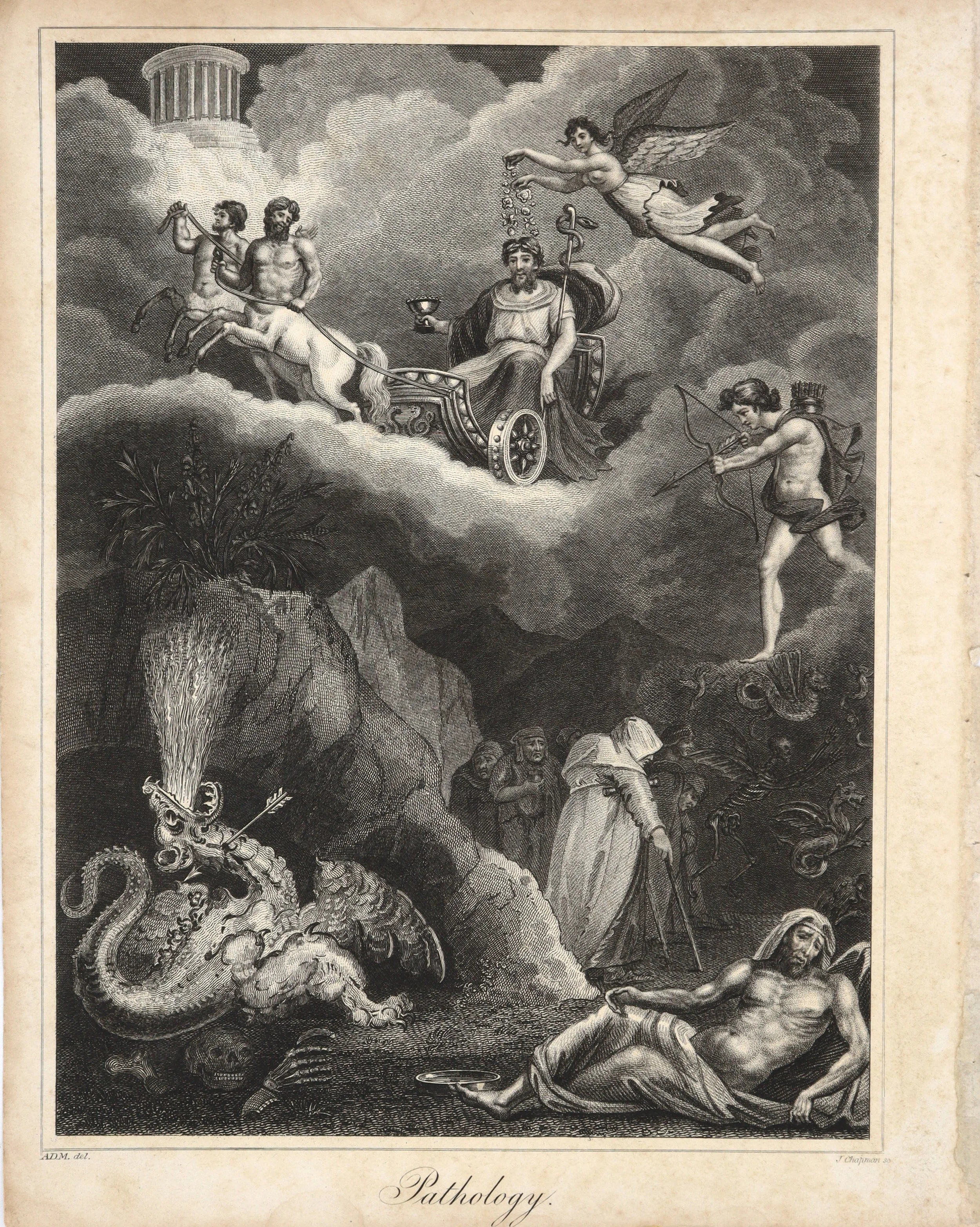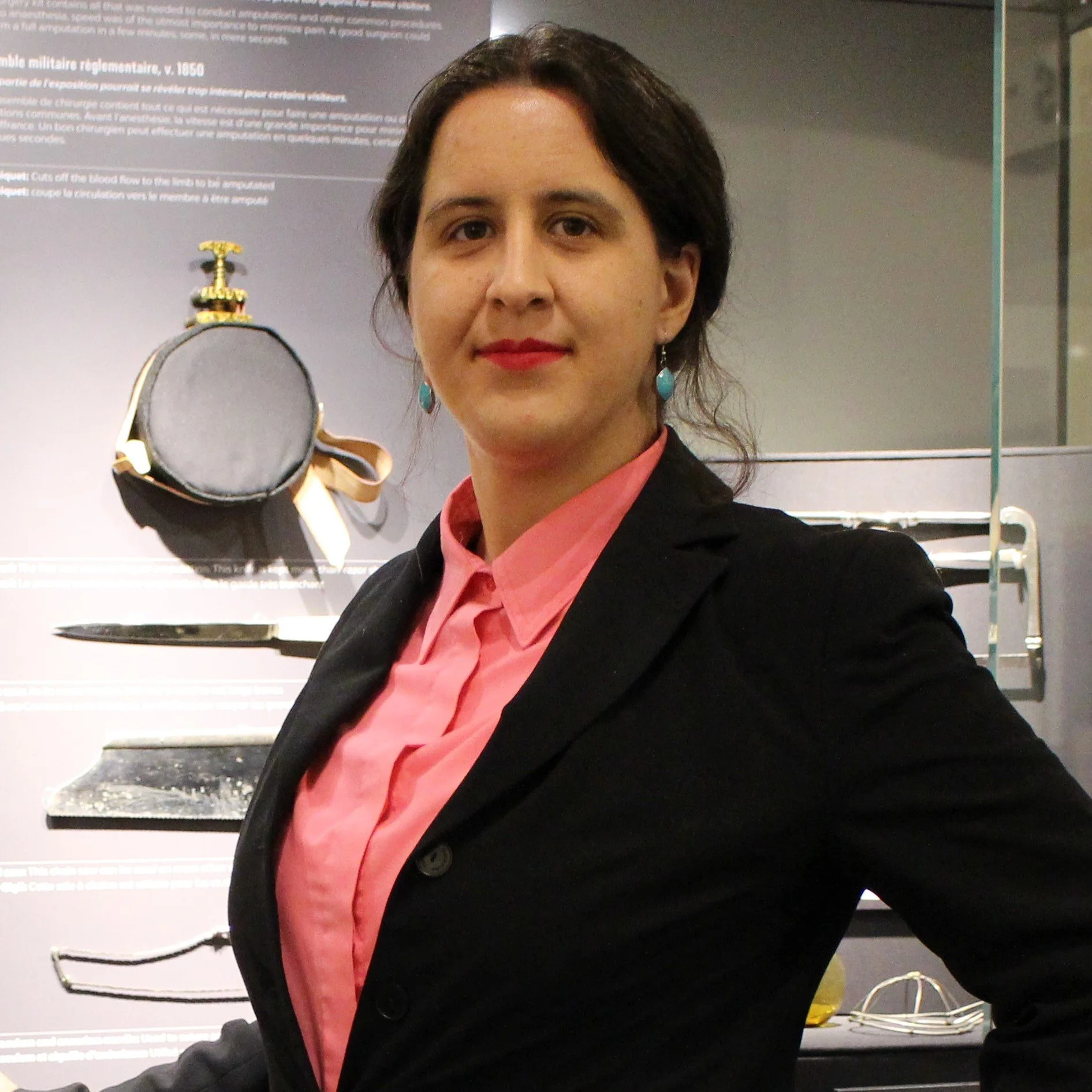A Fantastical Medical Bestiary: A Few Fantastical Extras
Mermaids, sea serpents, unicorns, and other mythological creatures have taken over the galleries this fall! The Museum of Health Care’s new exhibit, A Fantastical Medical Bestiary, is now open for viewing (a huge thank you to W.D. Jordan Rare Books and Special Collections, Queen's University Library, for their help with this exhibit).
I had a wonderful time researching and planning this exhibit, and I think visitors will really enjoy it. But, like every exhibit, you can’t show everything that you want to. So, I thought I would share some of the interesting facts and images that didn't quite make it in (all photos from the archives my own, snapped for reference during research):
We don't talk about animal medicine much in the Museum, but they are usually understood using the same disease systems as humans are. The Historie of Fovre-Footed Beastes states that “There are also medicinal properties in Camels, for by reason he is of a hot and dry temperament.” This speaks directly to four humours theory, the idea that the body’s four humours must be in balance for health. A hot and dry temperament is usually associated with anger and aggression.
Excerpt from The Historie of Fovre-Footed Beastes showing a Bactrian camel.
You’ll see this image in the exhibit in a discussion of dragon symbolism, but it also features centaurs. Many times, centaurs were associated with rowdiness and aggression. The connection between centaurs and healing originates with Chiron, a centaur who was a wise teacher. He gave up his immortality after being injured by a poisoned arrow; today he often symbolises “the wounded healer,” the medic who heals everyone but themselves.
Etching by J. Chapman after A.D.M. From the collection of the Museum of Health Care, 1984.6.134
A centaur is also featured in the zodiac as Sagittarius. Astronomy and astrology have often played an important role in healthcare. Here you can see the twelve signs of the Zodiac, along with the body part each sign is associated with.
Section from Hostetter's Illustrated Almanac 1899. From the collection of the Museum of Health Care, 996001630
One of the original inspirations for A Fantastical Medical Bestiary was A Compleat History of Druggs, which I got the chance to flip through at our symposium in March. Specifically this image and the matter of fact discussion of unicorn horn in a drug book fascinated me. The image didn't make it into the exhibit (beyond one small section of it used as a graphical element), nor did the vast majority of unicorn knowledge contained in the books I read. You'll notice that this drawing shows many different kinds of unicorns, some of which look familiar and some of which don't match our modern conception particularly closely. That's because early natural histories described many species of unicorn. I've included a few quotes from Topsell, below, describing some of my favourite kinds of unicorns. See if you can match any of them up with the drawings:
Excerpt from Pomet's A Compleat History of Druggs.
Likewife in the City Zeila of AEthiopia , there are Kine of a purple colour, as Ludovim Romanius writeth, which have but one horn growing out of their heads, and that turneth up towards their backs
there is a living creature (with one horn which is crooked, and not great) having the head of a Dragon, and a beard upon his chin, his neck long, and ftretched out like a Serpents, the refidue of his body like to a Harts, faving that his feet, colour, and mouth are like a Lions
Paulus Poaeius defcribeth an Unicorn in this manner; That he is a Beaft, in shape much like a young Horfe, of a dusty colour, with a maned neck, a hairy beard, and a fore-head armed with a horn of the quantity of two cubits, being feparated with pale tops or fpires, which is reported by the fmoothnefs and lvory whitenefs there
Unfortunately, none of the above made it into the actual exhibit - cut for space, irrelevancy, or the fact that it simply didn't fit in with the narrative that had emerged from my star pieces. That's life at a museum. You can never fit in everything that you'd really like to.
A Fantastical Medical Bestiary will be available until late spring of 2026. If this blog piqued your interest, just think how fascinating the exhibit must be if this is what got left out!
Primary Sources:
Pomet, Pierre. A Compleat History of Druggs : Written in French by Monsieur Pomet, Chief Druggist to the Present French King; to Which Is Added What Is Further Observable on the Same Subject, from Messrs. Lemery, and Tournefort, Divided into Three Classes, Vegetable, Animal and Mineral ; with Their Use in Physick, Chymistry, Pharmacy, and Several Other Arts : Illustrated with above Four Hundred Copper Cutts Curiously Done from the Life ; and an Explanation of Their Different Names, Places of Growth, and Countries from Whence They Are Brought ; the Way to Know the True from the False, Their Virtues &c. A Work of Very Great Use and Curiosity. Done into English from the Originals. London: Printed for R. Bonwicke, William Freeman, Timothy Goodwin, John Walthoe, Matthew Wotton, S. Manship, John Nicholson, Benjamin Tooke, Rich. Parker, and Ralph Smith, 1712.
Topsell, Edward, and Conrad Gessner. The Historie of Fovre-Footed Beastes : Describing the True and Liuely Figure of Euery Beast, with a Discourse of Their Seuerall Names, Conditions, Kindes, Vertues (Both Naturall and Medicinal), Countries of Their Breed, Their Loue and Hate to Mankinde, and the Wonderfull Worke of God in Their Creation, Preseruation, and Destruction : Necessary for All Diuines and Students, Because the Story of Euery Beast Is Amplified with Narrations out of Scriptures, Fathers, Phylosophers, Physitians, and Poets : Wherein Are Declared Diuers Hyerogliphicks, Emblems, Epigrams, and Other Good Histories. London: Printed by William Iaggard, 1607.
Supplementary Sources:
Benziman, Galia, Ruth Kannai, and Ayesha Ahmad. "The wounded healer as cultural archetype." CLCWeb: Comparative Literature and Culture 14, no. 1 (2012): 11.
Neel Burton MA MD, “What Can the Centaur Chiron Teach Us About the Human Condition?,” Psychology Today, January 8, 2025, https://www.psychologytoday.com/us/blog/hide-and-seek/202102/the-myth-of-chiron-the-wounded-healer.
Lev, Efraim. "Traditional healing with animals (zootherapy): medieval to present-day Levantine practice." Journal of ethnopharmacology 85, no. 1 (2003): 107-118.
About the Author
Rowena McGowan started her curatorship at the Museum of Health Care in March of 2022. She holds Bachelor’s degrees in Biology and Archaeology, and graduated with a Master’s degree in Museum Studies from the University of Toronto in 2016. She has worked at Semaphore Lab, the Philip J. Currie Dinosaur Museum, the Royal Tyrrell Museum of Palaeontology, the Manitoba Museum, and Lac La Biche Museum. In the little spare time her cat allows her, she enjoys writing fiction. Her first novel was published under a pseudonym in 2025.





